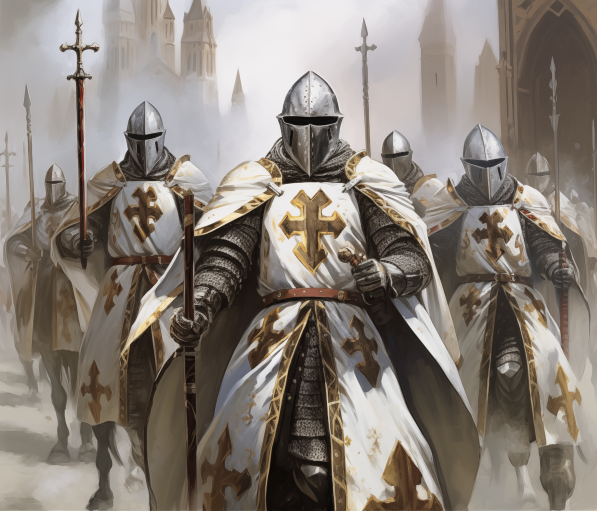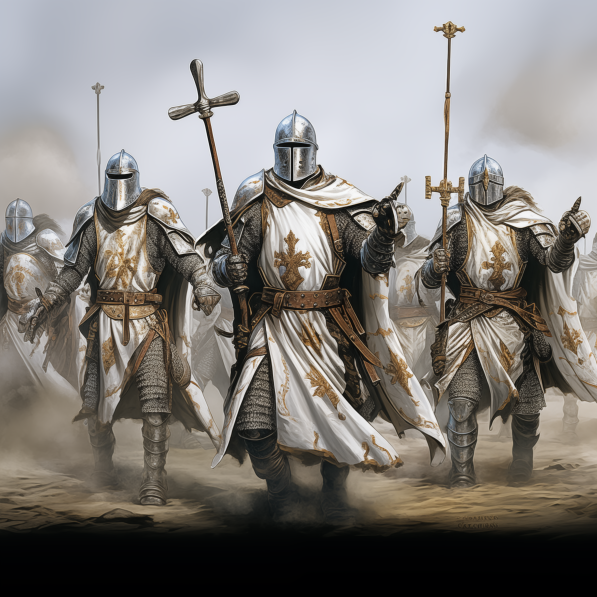Do you ever wonder what the State of the Teutonic Order was like?
In this article, we’ll take you on a journey through its fascinating history. From its establishment in Prussia during the 13th century to its expansion into territories like Courland and Livonia, the Teutonic Order had its fair share of conflicts with Poland and Lithuania. But after suffering defeats and territorial divisions, the State began to decline.
Join us as we uncover the intriguing story of the Teutonic Order.
Formation and Expansion of the Teutonic Order
The Teutonic Order was formed during the early 13th century in Prussia through the efforts of the knights of the Teutonic Order. The formation of this order marked the beginning of a period of colonization and conquest in the region.
The Teutonic Order, along with the Livonian Brothers of the Sword, merged in 1237 to become the Livonian Order, which covered present-day Estonia and Latvia. Through a series of conquests and battles, the Teutonic Order expanded its territory to include Chełmno Land, Courland, Gotland, Livonia, Estonia, Neumark, Pomerelia, Prussia, and Samogitia. The order facilitated German and Polish colonization in these territories.
However, after facing defeats in battles like Grunwald in 1410 and Wilkomierz in 1435, the Teutonic Order began to decline. This led to the loss of extensive territories in the Peace of Thorn in 1466. The Prussian branch of the order became Monastic Prussia, while the Livonian branch joined the Livonian Confederation.

Territorial Extent of the State
At its peak, the State of the Teutonic Order encompassed a vast territory spanning multiple regions in northern Europe. Through territorial expansion and conquests, the Order extended its influence over Chełmno Land, Courland, Gotland, Livonia, Estonia, Neumark, Pomerelia (Gdańsk Pomerania), Prussia, and Samogitia.
This expansion had significant historical significance and had a profound impact on neighboring countries. The Teutonic Order’s conquests and colonization efforts led to the German and Polish settlement of these territories. It also sparked conflicts with Poland and Lithuania, ultimately contributing to their alliance and the formation of the Polish-Lithuanian Commonwealth.
However, after defeat in battles like Grunwald in 1410, the State began to decline and gradually lost territories in the Peace of Thorn in 1466. The remaining territories became known as Monastic Prussia and existed as a part of the Kingdom of Poland. The Livonian branch of the Order joined the Livonian Confederation and continued to exist until 1561.
Decline and Battles With Poland and Lithuania
After its peak territorial expansion, the State of the Teutonic Order faced a period of decline and engaged in battles with Poland and Lithuania. These battles marked a turning point in the decline of the State. The fall of the Teutonic Order can be attributed to its conflicts with Poland and Lithuania.
The Order suffered a major defeat in the Battle of Grunwald in 1410, which weakened its position in the region. As a result, the region of Samogitia was restored to Lithuania.
In 1466, the Teutonic Order lost extensive territories in the Peace of Thorn, including Pomerelia and parts of Prussia. The decline of the State and these conflicts ultimately led to the formation of the Polish-Lithuanian Commonwealth in the 16th century.
Peace of Thorn and Division of Territory
Following the decline of the Teutonic Order and the battles with Poland and Lithuania, the Peace of Thorn in 1466 marked a significant turning point in the history of the State. This peace treaty resulted in extensive territories being lost and a division of the remaining territory.
The aftermath of the Peace of Thorn was significant for the Teutonic Order, as it led to the cession of Pomerelia and the western part of Prussia to Poland. These territories formed the Polish province of Royal Prussia, while the eastern part remained under Teutonic Order rule. This division of territory had long-lasting effects on the State, as it weakened its power and influence in the region.
The Peace of Thorn marked the beginning of a new era for the Teutonic Order, one characterized by territorial loss and a changing geopolitical landscape.
Secularization and Transformation of the Order
The Teutonic Order underwent a process of secularization and transformation, leading to significant changes in its structure and purpose. The impact of secularization on the Order was profound, as it shifted from a theocratic state to a secular entity. This transformation had historical significance, as it marked a turning point in the history of the Order.
The secularization of the Teutonic Order had far-reaching consequences, both internally and externally. Internally, it led to changes in the governance and administration of the Order, as well as a shift in its focus from religious to secular pursuits. Externally, it changed the perception of the Order, as it was no longer seen as a religious institution but as a political entity.
Livonian Branch and the Livonian Confederation
During the establishment of the Teutonic Order, the Livonian Branch emerged as an autonomous entity within the Order, eventually becoming part of the Livonian Confederation. The Livonian branch played a significant role in the Baltic region, specifically in present-day Estonia and Latvia.
As part of the Livonian Confederation, the Livonian branch collaborated with other territories to form a united front against external threats. This alliance allowed for greater stability and protection in the region. The Livonian Confederation also provided a platform for economic and cultural exchange, fostering development and growth.
The Livonian branch’s participation in the Confederation helped to shape the political and social landscape of the Baltic region during this time period.
Legacy and Present Status
You might be wondering about the lasting impact and current state of the Teutonic Order after its decline and dissolution. The Teutonic Order has left a significant historical significance and cultural impact in the regions it once ruled.
Presently, the Teutonic Order no longer exists as a sovereign state or military order. However, its legacy can still be seen in the architectural wonders it left behind, such as the magnificent castles of Malbork and Königsberg. These structures stand as reminders of the Order’s power and influence during its heyday.
Additionally, the Order’s presence and activities have shaped the cultural and religious landscape of the regions it once controlled. Today, the Teutonic Order is remembered for its role in the crusades and its contribution to the history of medieval Europe.
See also our article about the Teutonic Knights.


